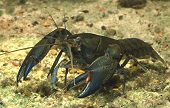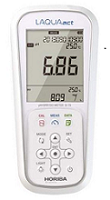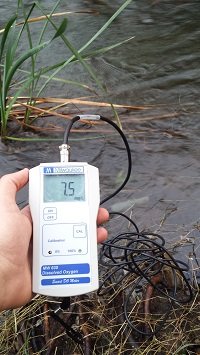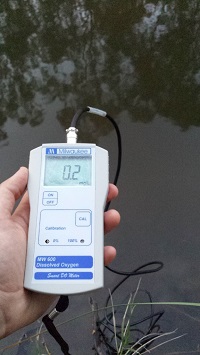What is Dissolved Oxygen and do the levels vary significantly around the state?
What is Dissolved Oxygen and do the levels vary significantly around the state? |
Does the dissolved oxygen level vary significantly around the state?We will be testing the dissolved oxygen level of a variety of waterways throughout the state to see whether they have a high enough level of Dissolved oxygen to support aquatic life! What is dissolved oxygen and why is it important?This month we will be establishing why dissolved oxygen is important to Ecosystems and why the levels can vary significantly at the same point of measurement at a different time! | |||||||||||||||||||||||
 Do the water sources near Adelaide contain enough oxygen to support aquatic life?Dissolved oxygen (DO) is a very important water quality parameter, and, as mentioned in the article, levels have to be at certain levels to be able to support aquatic life. In this month's experiment we will be comparing 3 different locations near the Instrument Choice office and determining whether the DO levels are high enough to support aquatic life. | |||||||||||||||||||||||
Equipment
Method Three different locations were chosen to be measured which would hopefully give a variation in results. The first location was the River Torrens which is the most significant river of the Adelaide plains, the second location was a backyard fish pond, and the third location was a dam alongside the O-Bahn Busway.
Prior to measurements being taken, the DO meter was calibrated as per the manufacturer’s instructions. To ensure accuracy on each measurement, the probe was agitated at approximately 0.3m/s to ensure that the oxygen depleted me Results
Discussion and Conclusion The results show that both of the locations tested along the River Torrens have sufficient levels of dissolved oxygen for supporting a diverse aquatic ecosystem. The readings taken in the dam show that at the medium depth level the level of dissolved oxygen is probably insufficient to support a large ecosystem, however some species such as yabbies or fish which are able to cope with lower oxygen levels may be able to tolerate it however they may not flourish under these conditions. At the lower depth, the dam water appears to be anoxic and would not be suitable for sustaining large aquatic life (some microscopic organisms may be able to survive). The pond water tested has similar, but slightly higher readings than the dam water, and it should be sufficient to support fish and yabby species. The results from this experiment have shown that the dissolved oxygen in the River Torrens is probably sufficient for sustaining a diverse aquatic population. The dissolved oxygen levels found in the dam and backyard pond were borderline high enough for supporting aquatic species. If you need assistance with selecting a logger to monitor your orchard please feel free to contact one of our friendly Scientists via email or phone on 1300 737 871. | |||||||||||||||||||||||
 Dissolved Oxygen, what is it and why is it important?Dissolved Oxygen or DO as it is more commonly referred to is the small amount of oxygen gas that is dissolved into a medium and is generally given in 'milligrams per litre (mg/l)' or 'percentage saturation (%)'. 'Milligrams per litre' is the amount of oxygen in a litre of water, whereas 'Percent saturation' is the amount of oxygen in a litre of water relative to the total amount of oxygen that the water can hold at that temperature. Oxygen gets into the water by diffusion, this can be from the surrounding air, by aeration (rapid movement), or as a waste product of photosynthesis. The most commonly measured medium is water as dissolved oxygen in water is essential for fish, aquatic animals, micro-organisms and plants within an ecosystem. In order to maintain a healthy ecosystem a consistent and high concentration of DO must be maintained. If DO levels drop there can be reductions or losses to more sensitive species as they cannot cope with the lower levels. As such it is vital to monitor DO levels where the ecosystems are sensitive to ensure adequate levels are maintained. There are a number of factors that influence the DO level and these include but are not limited to the following:
So, what levels can we expect in varying environments? This is something that cannot be quantified as DO concentrations can vary depending on several different factors. This includes but is not limited to factors such as temperature. turbidity, time of year, and wind. As such it is important that measurements are undertaken at a consistent time and are undertaken in a similar area. This will provide you with the most accurate measurements and will provide you with repeatable results. When undertaking DO measurements it is more important to focus on whether levels are above certain concentrations. Research has shown that a level of approximately 4.5mg/l is the minimum amount required to support a large and diverse ecosystem. In general good fishing waters have levels above 9mg/l, whilst issues begin occurring below 3mg/l and at these levels even hardy animals within the system can begin to perish. In saying this the amount of oxygen that a specific animal needs will depend on how large or complex the animal is and where it lives. Instrument Choice offer a large array of dissolved oxygen meters that can be used to undertake these investigations and if you need any assistance with selecting a meter or have further questions regarding the information above, please feel free to contact one of our friendly Scientists via email or phone on 1300 737 871. | |||||||||||||||||||||||



.jpg)